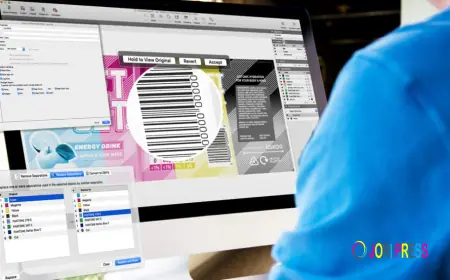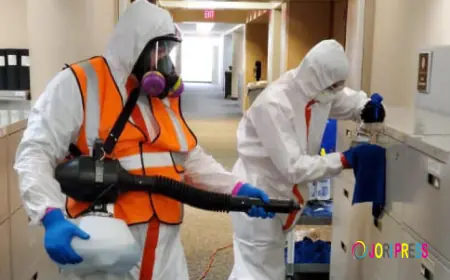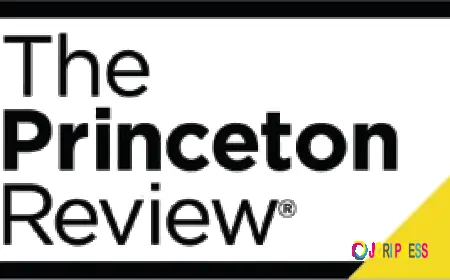Penetration Testing as a Service Market 2030: Global Size, Regional Outlook & Company Profiles
Industry Key Highlights
According to TechSci Research report, “Penetration Testing as a Service Market - Global Industry Size, Share, Trends, Competition Forecast & Opportunities, 2030F, The Global Penetration Testing as a Service Market was valued at USD 1.19 Billion in 2024 and is expected to reach USD 2.99 Billion by 2030 with a CAGR of 16.60% through 2030.
PTaaS is revolutionizing traditional cybersecurity approaches by providing scalable, agile, and continuous vulnerability assessment services. Enterprises are transitioning from periodic, manual testing to dynamic, automated penetration testing models. This shift not only enhances organizational resilience but also ensures compliance with increasingly stringent global cybersecurity regulations.
Request For Sample Copy of Report For More Detailed Market insight: https://www.techsciresearch.com/sample-report.aspx?cid=30196#requestform
Emerging Trends in the PTaaS Market
1. AI-Powered and Autonomous Penetration Testing
The infusion of artificial intelligence (AI) and machine learning (ML) is transforming how PTaaS providers deliver their services. Advanced algorithms now perform intelligent reconnaissance, automate test scenario generation, and identify vulnerabilities in real time with enhanced precision.
Autonomous penetration testing platforms are capable of adapting to dynamic attack surfaces, learning from past incidents, and simulating multi-vector attacks that mimic real-world threat actors. This trend is expected to define the future of the PTaaS market by reducing human dependency and increasing test frequency and accuracy.
2. Shift to Continuous and On-Demand Testing
Modern IT ecosystems evolve rapidly, necessitating real-time security assessments. PTaaS offerings now emphasize continuous, on-demand testing—enabling organizations to validate their security posture after every major update or configuration change.
This trend is particularly significant for agile development environments that follow CI/CD pipelines. Continuous penetration testing ensures that security keeps pace with development cycles and reduces the risk of exploitable vulnerabilities in production environments.
3. Cloud-Native and Multi-Cloud Security Testing
The widespread adoption of cloud computing has introduced new security challenges. Over 94% of enterprises now use a multi-cloud strategy, increasing complexity in access management, data flows, and infrastructure configuration.
PTaaS providers are developing cloud-native testing frameworks tailored to public, private, and hybrid cloud environments. These tools support integration with cloud security posture management (CSPM), container orchestration platforms like Kubernetes, and API security layers, enabling comprehensive protection of cloud-native applications.
Market Drivers
1. Surging Cyber Threat Landscape
Cyberattacks are increasing in frequency, complexity, and impact. Organizations face daily threats from ransomware, phishing, APTs (Advanced Persistent Threats), and insider attacks. PTaaS enables them to simulate real-world attacks and assess system vulnerabilities before adversaries can exploit them.
2. Cloud Migration and Digital Transformation
As businesses digitize operations and migrate infrastructure to the cloud, new security blind spots emerge. PTaaS solutions offer scalable and adaptive testing mechanisms that align with evolving IT environments, ensuring security isn't compromised during transformation.
3. Stringent Regulatory Compliance Requirements
Laws and frameworks such as GDPR, HIPAA, PCI DSS, and ISO 27001 mandate regular vulnerability assessments and penetration tests. PTaaS simplifies compliance by offering audit-ready reports, automated testing logs, and continuous monitoring.
Future Outlook
The PTaaS market is poised for sustained momentum through 2030 and beyond. Its expansion will be influenced by:
1. Integration with DevSecOps Pipelines
Penetration testing will increasingly become a native function within DevSecOps environments. This will ensure security vulnerabilities are addressed during development, not post-deployment.
2. Unified Threat Management Ecosystems
PTaaS platforms will integrate with SIEM, SOAR, IAM, and endpoint detection systems to provide a 360° view of an organization’s threat landscape.
3. Blockchain-Based Security Testing
With blockchain adoption in finance and supply chains, specialized PTaaS tools for smart contract auditing and decentralized applications (dApps) will emerge.
4. Global Expansion and Localization
As cyber regulations tighten globally, PTaaS providers will localize services for compliance with regional laws, language, and security frameworks.
Key market players in the Penetration Testing as a Service Market are: -
- Rapid7, Inc.
- CrowdStrike Holdings, Inc.
- Qualys, Inc.
- Coalfire Systems, Inc.
- Synack, Inc.
- Trustwave Holdings, Inc.
- Secureworks, Inc.
- Cobalt Labs, Inc.
Customers can also request for 10% free customization on this report.
Contact US:
Techsci Research LLC
420 Lexington Avenue, Suite 300,
New York, United States- 10170
Tel: +13322586602
What's Your Reaction?
 Like
0
Like
0
 Dislike
0
Dislike
0
 Love
0
Love
0
 Funny
0
Funny
0
 Angry
0
Angry
0
 Sad
0
Sad
0
 Wow
0
Wow
0



















































